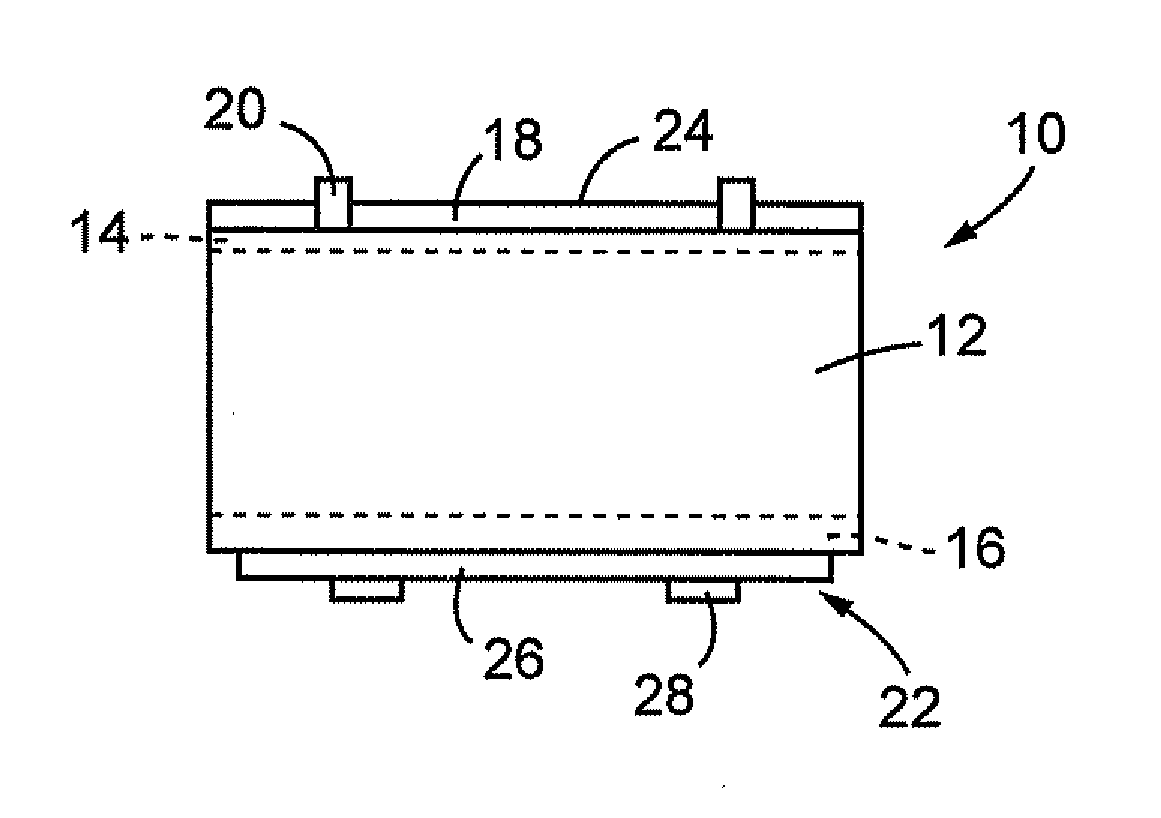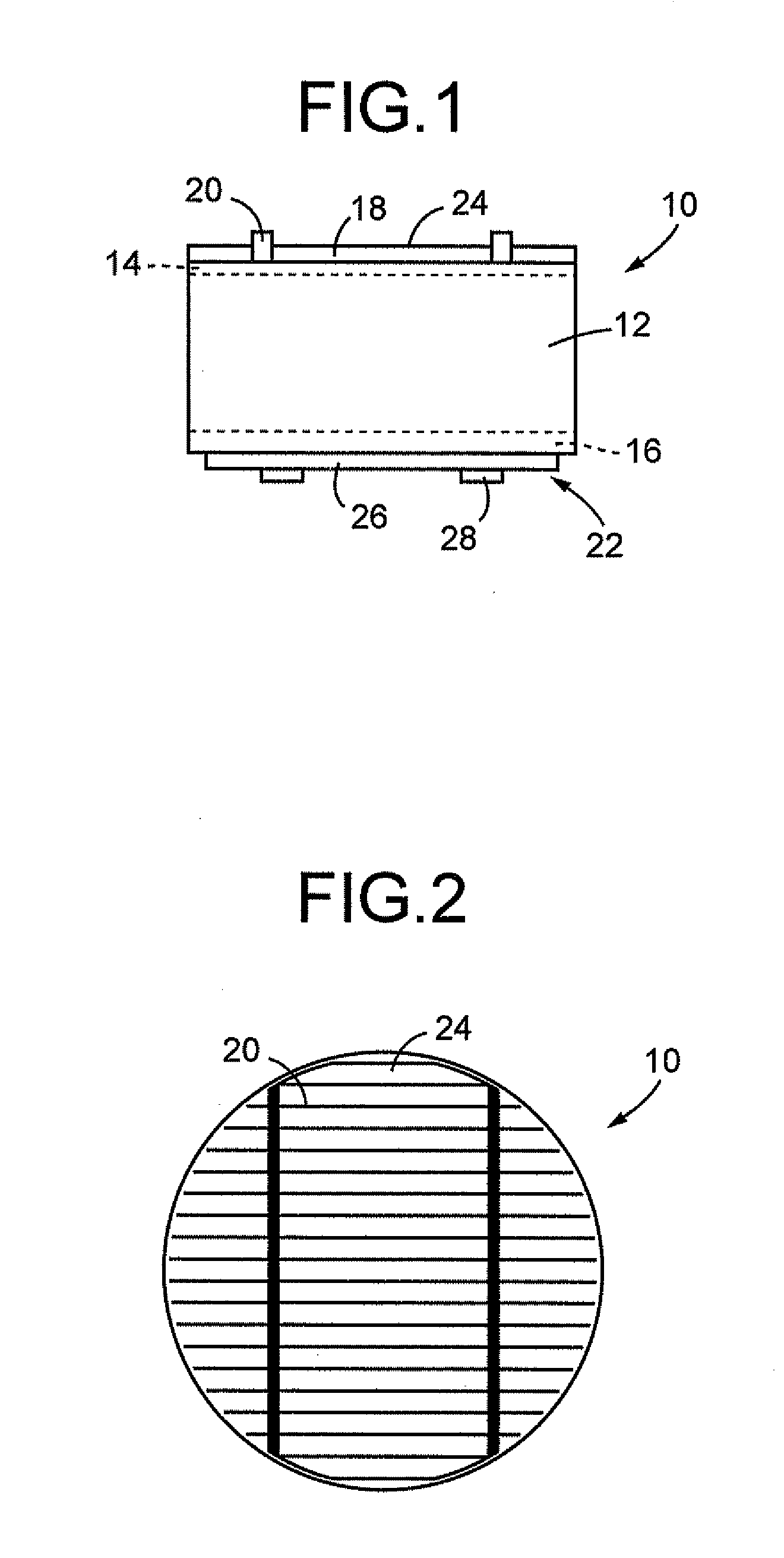Conductive paste composition for solar cell
a solar cell and conductive paste technology, applied in the direction of non-metal conductors, conductors, metal/alloy conductors, etc., can solve the problems of preventing efficient extraction of electric power generated, and achieve the effects of low contact resistance, easy control, and high sheet resistan
- Summary
- Abstract
- Description
- Claims
- Application Information
AI Technical Summary
Benefits of technology
Problems solved by technology
Method used
Image
Examples
Embodiment Construction
[0045]An embodiment of the present invention will now be described in detail with reference to the drawings. In the following embodiment, diagrams are simplified or modified as needed and dimensional ratios and shapes of portions are not necessarily exactly depicted.
[0046]FIG. 1 is a schematic of a cross section structure of a silicon-based solar cell 10 to which a conductive composition of one embodiment of the present invention is applied. In FIG. 1, the solar cell 10 includes, for example, a silicon substrate 12 that is a p-type polycrystalline semiconductor, an n layer 14 and a p+ layer 16 formed respectively on the upper and lower surfaces thereof, an antireflection film 18 and a light-receiving surface electrode 20 formed on the n layer 14, and a rear surface electrode 22 formed on the p+ layer 16. The thickness dimension of the silicon substrate 12 is about 100 to 200 (μm), for example.
[0047]The n layer 14 and the p+ layer 16 are disposed by forming layers having high impurit...
PUM
| Property | Measurement | Unit |
|---|---|---|
| thickness | aaaaa | aaaaa |
| thickness | aaaaa | aaaaa |
| mol % | aaaaa | aaaaa |
Abstract
Description
Claims
Application Information
 Login to View More
Login to View More - R&D
- Intellectual Property
- Life Sciences
- Materials
- Tech Scout
- Unparalleled Data Quality
- Higher Quality Content
- 60% Fewer Hallucinations
Browse by: Latest US Patents, China's latest patents, Technical Efficacy Thesaurus, Application Domain, Technology Topic, Popular Technical Reports.
© 2025 PatSnap. All rights reserved.Legal|Privacy policy|Modern Slavery Act Transparency Statement|Sitemap|About US| Contact US: help@patsnap.com


